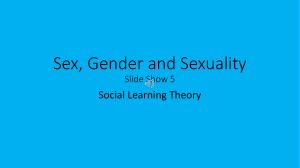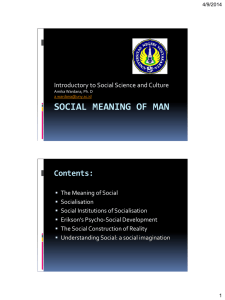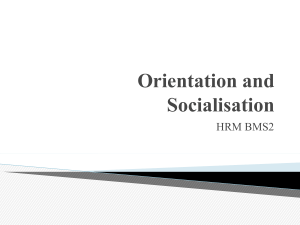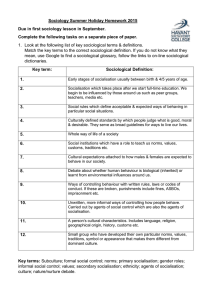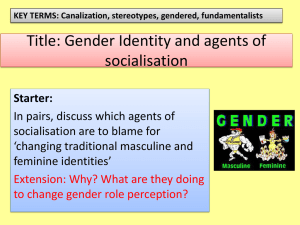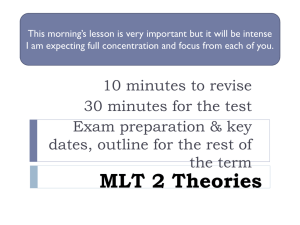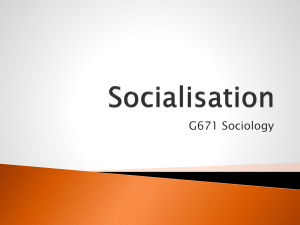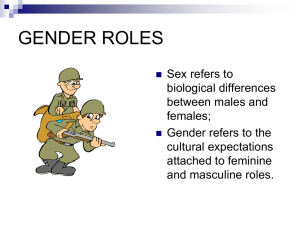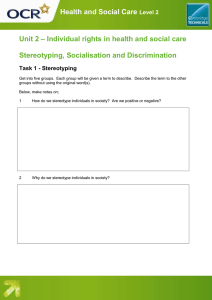Summary Of Assessment This specification is divided into a
advertisement
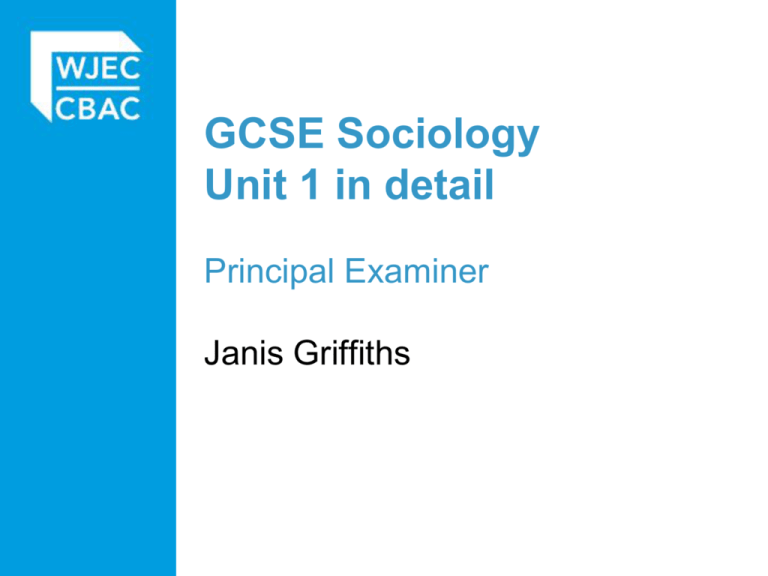
GCSE Sociology Unit 1 in detail Principal Examiner Janis Griffiths Question 1 • A few confusions with the choice of words, mostly fine • In another year, may well ask as a question... ‘Which term means ...’ Question 2 • Managed a) and b) • With c) answers not always developed to show meaning. ‘Explain ...’ indicates that development is required. • Answers to d) not always offering one thing and explanations not always social or developed. Usually found 1 mark. Question 3 • Answers to a) and b) fine. • Answers to c) often biological in the ‘men are stronger and more fit’ despite the clue in the item. Was this actually read? • Question d) challenged because it required a focus on socialisation as applied to sport. New AO3 of context. Question 3 continued • Many did not read the question; it was extension for the better candidates. • Appropriate plan – State method – Statement – Develop methodological point or contextualise to the scenario Question 4 • Questions a) and b) offered limited challenge. • Large numbers of candidates vague on sanctions. Question 4 continued • Answers to d) were either very good or weak. – We may offer cues in future exams. – Use of technical language sought and often found – though not always accurately – Same or very similar point was made twice and it was difficult to award for both answers Question 4 (e) and (f) • These were differentiating questions. • (e) Many wrote perfectly sensible open questions – others were leading, double questions or closed questions. • Most were not sure of the purpose of a pilot study (f) even if they knew what it was Question 5 • Poorly handled by many. • Often defined Agency in terms of ‘place where socialisation takes place’ Question 5 continued • (b) was deliberately challenging, and many found healthy eating, hard work or discipline for 1 mark. • The problem is that they were defined in terms of normal behaviour and not in terms of a value or principle underlying behaviour. Question 5 (c) • The question required an explanation of the difference between two forms of socialisation. • A clear statement of difference was therefore needed. • Many thought primary socialisation stopped at a precise age, and then secondary socialisation kicked in. Question 5 (d) • Much confusion between how and why. • A simple answer explaining what schools may do, with examples: books, actions of teachers, rules, discipline would all have sufficed. • Many talked about how schools offered opportunities for children to talk to each other or looked at need to maintain order Question 6 • Gender stereotypes identified • (b) limited answers repeating basic stuff about advertising • Some lack of clarity as to meaning of media • (e) not handled well. Often only one point or five. Repetitive and not concerned with process. Options: Unit 1 Rule of thumb for marks for a C grade a) 6/10 b) 6/10 c) 12/20 In practice, C grades could be achieved with lower marks if section A was done well Question 7 a) Some good candidates ‘over-thought’ the answer and wrote a lot of theory which could not be credited b) Some vagueness as to the meaning of cohabitation and in many cases, no attempt to define or explain. c) Very few explained what the changes to divorce rates actually are – this is a good introductory paragraph as well. Otherwise, well rehearsed and clear answers. Question 8 a) Considerable lack of clarity on this – generally they were vague or out of date b) This was often done well, though personal rather than thinking about social advantage of private education. c) This was more challenging than intended – they struggled with ideas. Those who caught on that they could compare and contrast middle class with working class children did well. Rote learners died on their feet! Question 9 a) Some vagueness as to what the media actually are. Answers tend to be technical rather than talking about the medium b) Generally handled really well c) Mostly stereotyped and limited trek through a couple of media forms such as soap operas and magazines and rather dated. Limited reference to body image or changing stereotypes. Question 10 a) Usually fairly well handled – over reliance on football b) Not badly done either, but personal rather than social c) Again, getting over the reliance on football, not badly done. Tendency to focus on personal rather than social – noting to ‘get fit’ without mentioning that fitness is desirable in terms of body shape and image. Probably not attempted by many centres. Option Questions (a) answers • Focus on description • May not always be a simple two part split. Option Questions (b) answers • Lists will work here. • Explain the meaning of the term. • Make a point and offer development and/or an example Option Questions (c) answers • This is an essay. • It needs standard, if short, essay structure. • There needs to be careful reading of questions, paying attention to how and why • It needs a little practice to get the good grades Strategies • Learn the key terms • Keep answers in section A short and focused. • If there is confusion, go back later and check. • Develop, exemplify and explain points where necessary For further information, please contact the subject officer at the WJEC Joanna Lewis 245 Western Avenue Cardiff CF5 2YX joanna.lewis@wjec.co.uk
